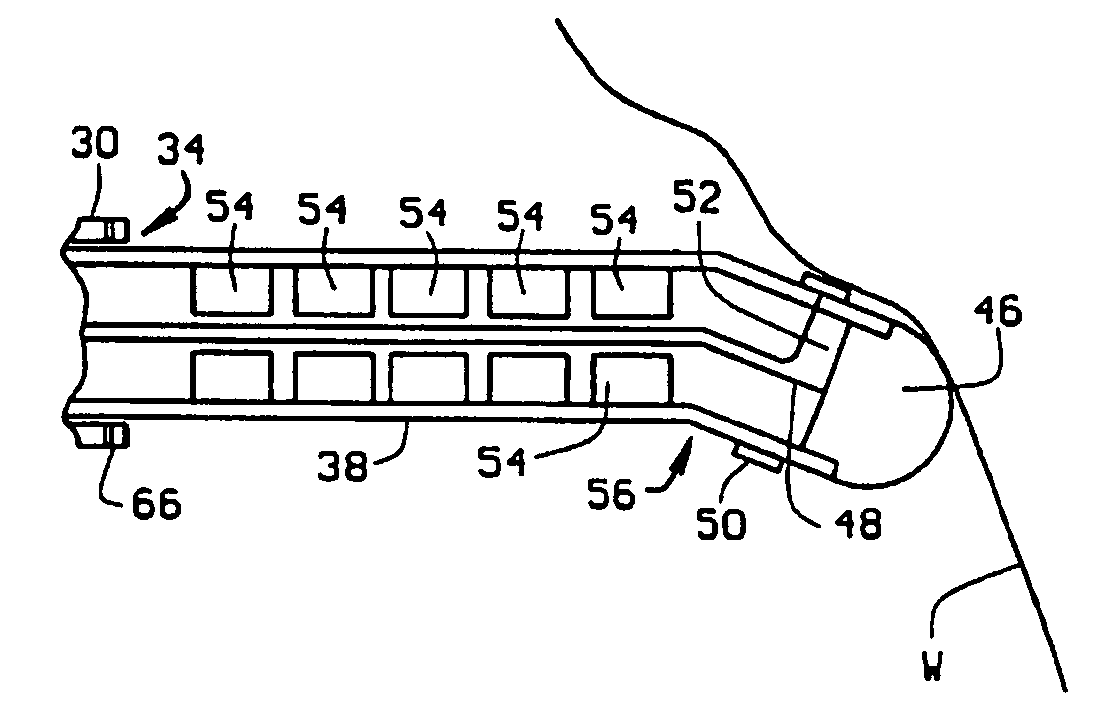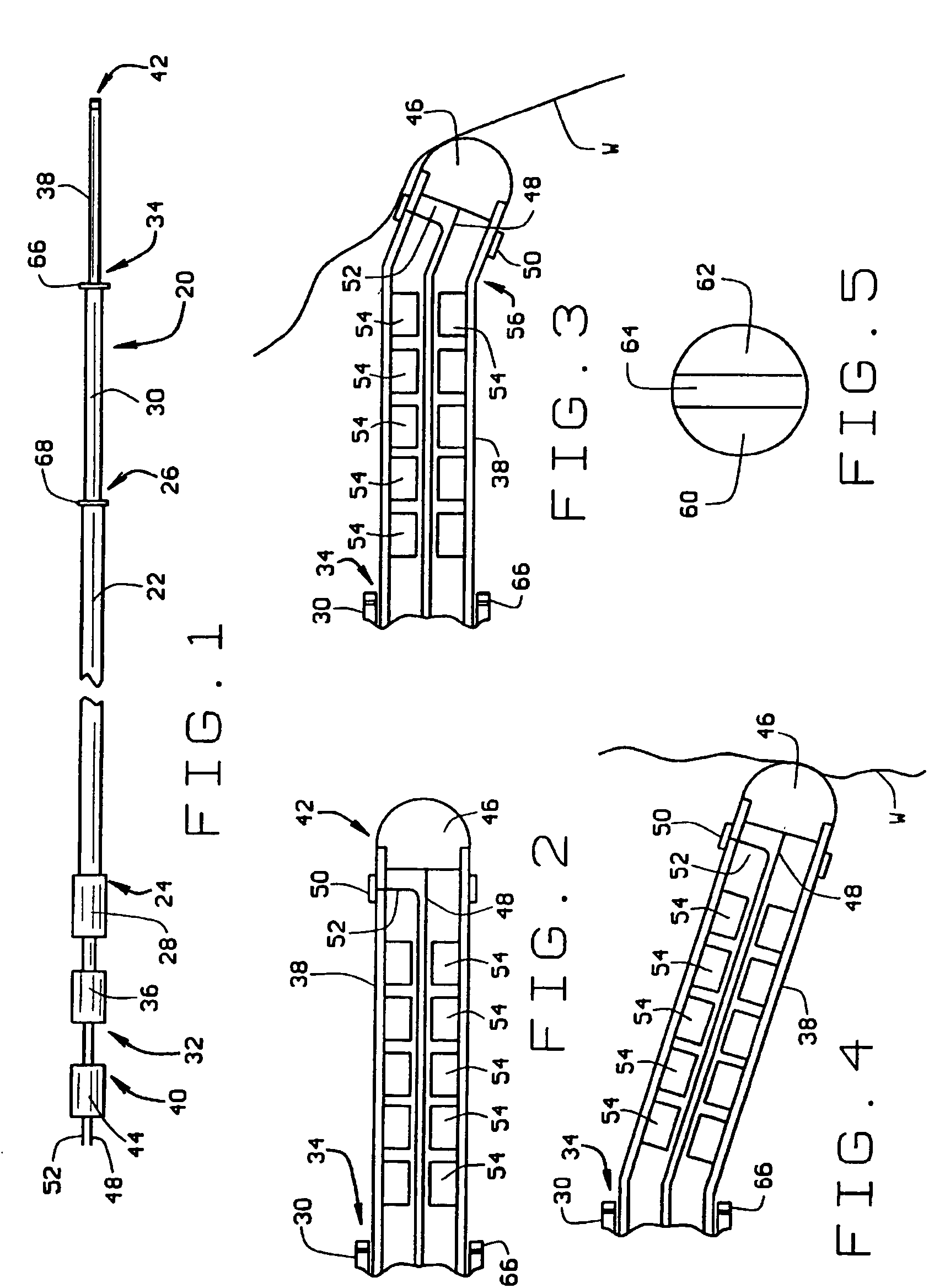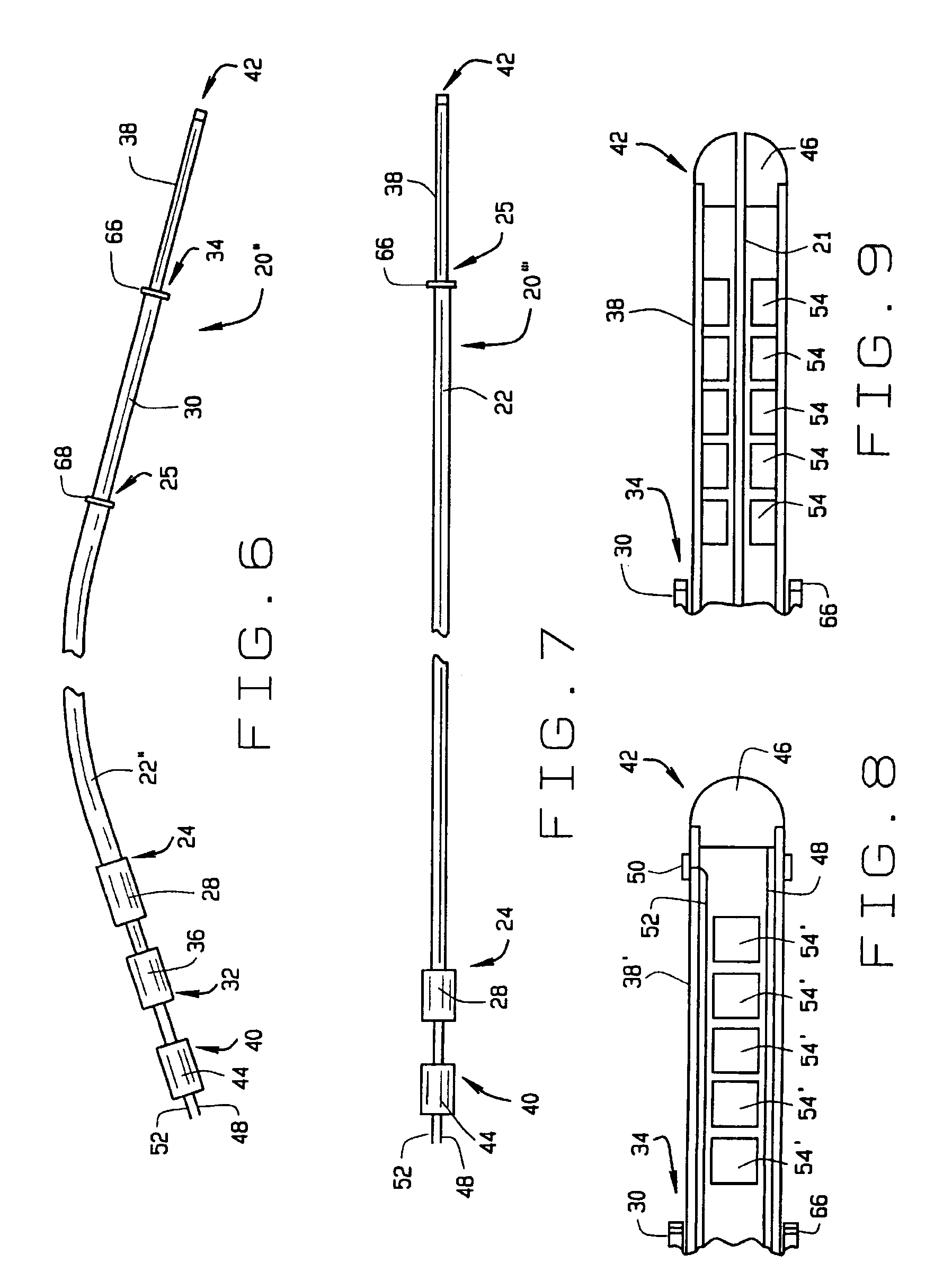Magnetically navigable telescoping catheter and method of navigating telescoping catheter
a telescoping catheter and navigable technology, applied in the field of magicically navigable telescoping catheters, can solve the problems of limited number of directions of movement, procedure can be extremely tedious and time-consuming, and previously available navigable devices and navigation methods are only marginally acceptable for some procedures, so as to improve accuracy, reduce procedure times, and superior control of the distal end of the catheter
- Summary
- Abstract
- Description
- Claims
- Application Information
AI Technical Summary
Benefits of technology
Problems solved by technology
Method used
Image
Examples
Embodiment Construction
[0027]A catheter constructed according to the principles of the present invention is indicated generally as 20 in FIG. 1. As shown in the figures and described herein, catheter 20 is an electrode catheter having one or more electrodes thereon, but this invention is not so limited and the catheter can be used for other purposes, for example the delivery of diagnostic or therapeutic agents. FIG. 9 shows such a catheter 20′ with a central passage 21 for the delivery of diagnostic or therapeutic agents.
[0028]The electrode catheter 20 of the preferred embodiment comprises a sheath 22 having a proximal end 24 and a distal end 26. The sheath 22 is preferably about 120 cm long. There is a connector block 28 at the proximal end of the sheath 22. The sheath 22 is preferably made from conventional sheath material, with an outside diameter of about 9 French. As shown in FIG. 6, instead of the straight sheath 22, in an alternate construction of the electrode catheter 20″, the sheath 22″ may be p...
PUM
 Login to View More
Login to View More Abstract
Description
Claims
Application Information
 Login to View More
Login to View More - R&D
- Intellectual Property
- Life Sciences
- Materials
- Tech Scout
- Unparalleled Data Quality
- Higher Quality Content
- 60% Fewer Hallucinations
Browse by: Latest US Patents, China's latest patents, Technical Efficacy Thesaurus, Application Domain, Technology Topic, Popular Technical Reports.
© 2025 PatSnap. All rights reserved.Legal|Privacy policy|Modern Slavery Act Transparency Statement|Sitemap|About US| Contact US: help@patsnap.com



